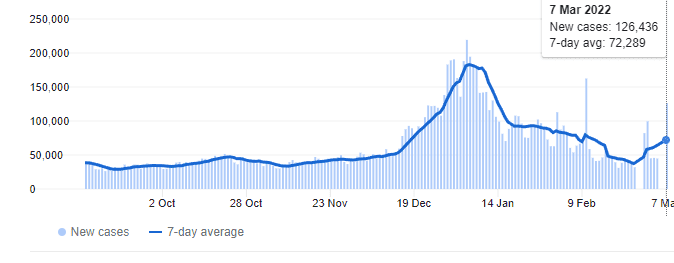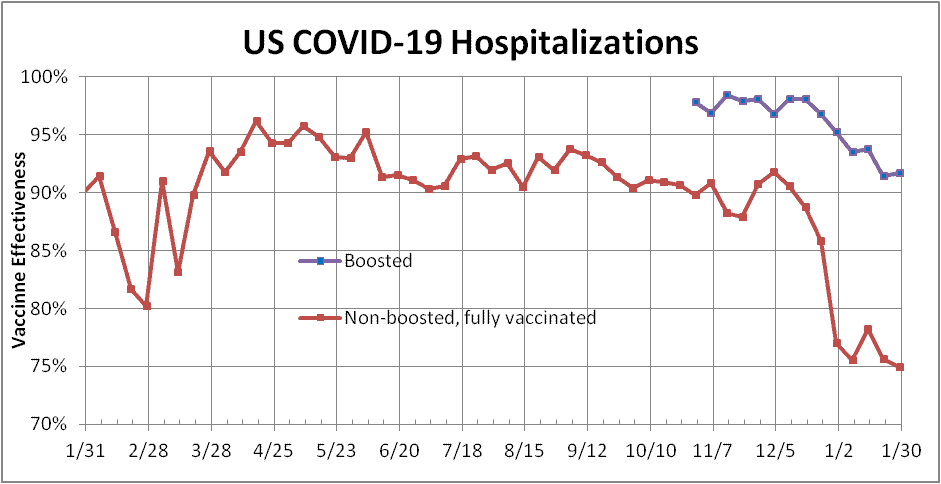I know — we’re all tired of the pandemic and we’re all hoping it’d be over by now. But unfortunately, the virus doesn’t really care about media fatigue or how tired we all are of this pandemic.
While substantial progress has been made on the vaccination front, new variants continue to emerge, and researchers warn that the pandemic is still not done yet. Now, a new Omicron variant (BA.2) is surging in several parts of the world, including the US, UK, and Hong Kong.

Researchers warned us from the beginning that until we reach herd immunity at a global level, new variants will continue to emerge and we’d still be stuck in a pandemic — and this is exactly what we’re seeing now. After the more contagious Delta variant came in and swooped over the Alpha and Beta variants, Omicron made it all look like a joke.
The contagiousness math adds up very quickly.
Alpha was 50% more contagious than the original Wuhan strain. Delta is 40-60% more contagious than Alpha. Omicron is 105% more contagious than Delta. Now, the BA.2 Omicron variant appears to be 30% more contagious than the original Omicron, and we’re seeing the number of cases spike accordingly.
The emergence of the new subvariant coincides with a wave of lifting restrictions. Countries (especially those with a relatively high level of vaccination) were quick to relax restrictions and ease the political, social, and economic pressure they were causing — but this has come at a cost.
In the UK, the BA.2 variant has become dominant, and while at some point it seemed that the Omicron wave would simply burn out in the country, we’re seeing a new surge in cases and hospitalizations are starting to follow.

What we know about BA.2 Omicron so far
While it clearly appears to be more transmissible (and will likely become dominant across the world), we still don’t know how severe this subvariant is. Lab experiments from Japan suggest that it may have Delta-like characteristics and may cause more severe illness.
“More importantly, the viral RNA load in the lung periphery and histopathological disorders of BA.2 were more severe than those of BA.1 and even B.1.1. Together with a higher effective reproduction number and pronounced immune resistance of BA.2, it is evident that the spread of BA.2 can be a serious issue for global health in the near future,” a study not yet peer-reviewed concludes.
However, a separate study from South Africa found that a similar proportion of individuals with BA.1 and BA.2 infections required hospitalization, and data from Denmark suggests similar hospitalization rates for BA.1 and BA.2.
As is always the case with new variants and subvariants, it’s hard to tell exactly how things stand in the beginning. It’s also curious that while it seems to be taking over in several parts of Asia and Europe, BA.2 transmission in the US seems relatively low.
Importantly, while Omicron BA.2 shows some ability to evade vaccine immunity, it seems that boosters still provide excellent immunity. Overall, BA.2 shows the already well-known Omicron ability to evade some of the protection offered by two shots — but three shots offer over 90% protection against hospitalization.

Long-term, it seems that booster-provided protection wanes in time, and the rate of booster shot delivery has also slowed down, presumably as people’s interest in the pandemic also wanes. But variants don’t care how much attention you’re paying.
Did we rip the bandaid too soon?
Another reason why BA.2 is spreading so quickly is that many countries have relaxed restrictions — or removed them altogether. Some researchers believe this was done too quickly.
In addition to extra transmissibility, the BA.2 subvariant also appears to be capable of escaping some of the treatments we have for COVID-19. While the original Omicron was capable of evading two of the four monoclonal antibody drugs used in infections in high-risk individuals, a study from New York University suggests that BA.2 can bypass a third drug, sotrovimab.
Researchers also caution that even mild cases can cause lasting brain damage (and potentially other problems as well). A study from Oxford found that the virus produces changes in the brain and may shrink grey matter.
Ultimately, the vast majority of people with booster shots should be able to evade the worst of the virus effects — but they can still be in for an unpleasant ride.


